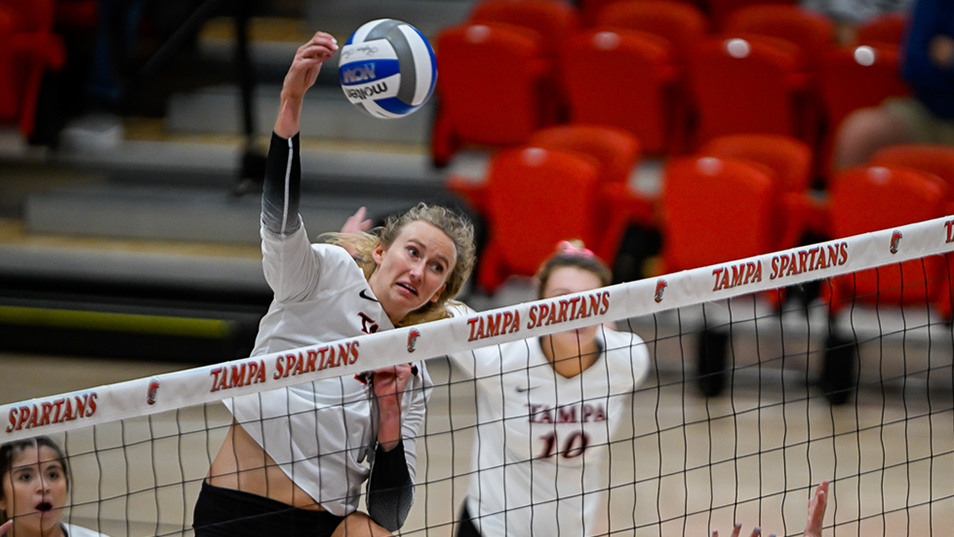Contact us
401 W. Kennedy Blvd.
Tampa, FL 33606-13490
(813) 253-3333
Being a varsity student-athlete is normally an undergraduate pursuit. The NCAA has rules, after all, that historically have restricted competition mostly to those completing a traditional, four-year course of study.

It's a pandemic consequence of opportunity – both lost and gained – that some call a “silver lining” after some very tough years. Photo by Avianna Moses

Men’s soccer player Ezrick Nicholls never planned on graduate school. Photo by Todd Montgomery
Men’s soccer player Ezrick Nicholls '22 never planned on graduate school. By now, he figured he’d be in the workforce, armed with a bachelor’s degree in business management. Instead, he’s wrapping up a master’s in professional communication. Volleyball player MacKenzie Dufresne '22 anticipated graduate school later in life, but she’s immediately completing her master’s degree in criminal justice.
Women’s basketball player Audrey Ramsey is getting an MBA and a master’s degree in cybersecurity. Because she took a redshirt season, Ramsey will be on scholarship for six academic years. Counting her accelerated high-school credits, she will leave UT with three master’s degrees.
Art Goon, UT’s assistant vice president/director of graduate and continuing studies, said he’s happy that so many student-athletes are utilizing the additional benefit.
Goon, a former college soccer head coach, said no admission standards were changed to accommodate the increase in graduate students, but UT already had instituted programs to ease the transition from undergraduate work. UT’s “4-plus-1’’ plan allows students to take graduate courses as part of their early schooling, so only one year is needed to complete a master’s degree.

Audrey Ramsey ’21 M.S., MBA ’24 is finishing her basketball career while also earning an MBA and a master’s in cybersecurity. Photo by Avianna Moses
More UT News